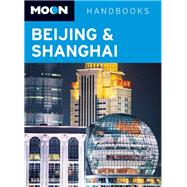Journalist Susie Gordon offers her insider's perspective on Beijing and Shanghai, from experiencing the grandeur of the Forbidden City and slurping noodles at the open-air night market in Wangfujing to shopping in People's Square and strolling through Old French Concession. Gordon also includes many unique travel strategies, including Essential Beijing, Whistle-Stop Shanghai, and City Contrasts—a 10-day itinerary for a tour of both cities. From Beijing's well-preserved old hutong alleys to Shanghai's ultra-modern Pudong district, Moon Beijing & Shanghai gives travelers the tools they need to create a more personal and memorable experience.








